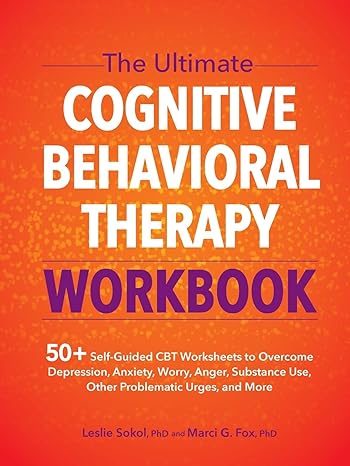You feel elated climbing to the top of the mountain with your lover. As the cool breeze caresses your face and you look down to enjoy the 360-degree view, a thought crosses your mind:
What if I fall from here?
Another thought followed: Should I try pushing my partner off this mountain?
Did you see how strange and intrusive the thought was? It wasn’t that you consciously thought about it. Or something that you were thinking or obsessing about. Also, it wasn’t that this thought originated from some old fear of falling.
Had it been an ingrained fear within you, you would have felt a strong emotion and a trail of thoughts coming into your mind while climbing up the mountain rather than experiencing a sudden flash of thought.
And even if it did originate from your fear, why would you think of making your partner fall off the mountain?
Did you notice how these thoughts have absolutely no connection with you whatsoever? The thoughts that came into your mind felt completely alien. Neither were you desiring them, nor were you obsessively thinking about them. Then how did it come to your mind in the first place? And what if you made a judgment about yourself at that moment about how horrible of a person you are? Or worse, decided to act upon them?
Let’s do a deeper inquiry and see what these thoughts are, where they come from, and how we can counter them.
What Are Intrusive Thoughts, and Where Do They Come From?
Intrusive thoughts are involuntary thoughts. They don’t stem from our conscious thinking but make their way or pop up in the form of thoughts, images, and flashes, only to trigger negative feelings. We all experience it to some degree, but when the occurrence of intrusive thoughts crosses a certain limit, it can cause emotional turmoil.
It’s understandable that, in most cases, we wouldn’t take such thoughts seriously and choose to ignore them. The example of jumping off a mountain is an extreme scenario. Most people wouldn’t allow such thoughts to influence their decision-making. But what if intrusive thoughts are influencing us on a subtler level? So much so that our emotional well-being gets compromised without us even realizing it.
🎭 Fun Fact |
This is where we need to understand the root of the intrusive thoughts. Where do they come from, how do they impact us, and at what scale?
Why do they Happen?
The reasons for intrusive thoughts can vary from person to person. For some, stress and anxiety could be the trigger of thinking thoughts that are unpleasant and beyond their control. For others, the reason could be underlying mental health conditions like obsessive-compulsive disorder (OCD), post-traumatic stress disorder (PTSD), and anxiety disorders.
In any given scenario, it hampers the person’s ability to remain stress-free and brings out obsessive behavior.
According to a study published in the Journal of Anxiety Disorders, trying to suppress intrusive thoughts actually makes them more persistent and distressing.
Intrusive thoughts have no control over you if you do not identify with or act upon them. The problem arises when you invest in these thoughts. The cycle of misery starts when you see yourself through its lens and begin to question yourself. Therefore, it is important to identify the nature of the thoughts so you can save yourself from unnecessary trouble.
Intrusive thoughts are often unusual and bothersome to the extent that they make you feel anxious. It could be violent, sexual, and aggressive in nature. When these thoughts come in full force, it is hard to control them, and they may appear in a repetitive format.
Let’s find ways to reduce their occurrence.
Practical Ways to Overcome Intrusive Thoughts
There are practical ways that can help you reduce the frequency of intrusive ways. When you implement these techniques in your life, you will see significant relief from the thoughts that come uninvited and cause immense worry and anxiety.
#1: Cognitive Behavioral Therapy
Cognitive behavioral therapy aims to challenge negative thoughts. Oftentimes, we go as our mind directs. We do not feel the need to question our thoughts and do what they tell us to do. In times when we don’t feel safe in our minds, feel that our thoughts are out of control, or perceive a threat or harm from the thoughts that we are thinking, we need to question the origination and existence of those thoughts.
By doing so, we find a possibility to rewire our negative thoughts to a different outcome. The negative thoughts that come to our mind are often automated and strongly associated with a negative emotion. All we need to do is disconnect the automated chain of thought and reaction.
For this, you can go to a CBT therapist or work through your fears, triggers, and complex emotions with a CBT workbook. Either way, you’ll get a new perspective, and you’ll be able to replace your old redundant beliefs with healthier and more constructive ones.
#2: Follow a Routine
Following a routine is crucial if you want to break the chain of intrusive thoughts. Intrusive thoughts are generally the result of stress and anxiety. As we put our entire day in structure and keep ourselves organized, we leave no room for intrusive thoughts. When you redirect your attention to constructive activities, you ensure that you are giving your mind enough work, and it’s very unlikely for intrusive thoughts to appear and disturb your mental state. You can indulge in regular workouts, journaling your thoughts, practicing meditation, having meals on time, pursuing a hobby, and other types of work to make sure your thoughts and energy are invested in the right direction.
#3: Mindfulness and Meditation
When we align ourselves with our real nature and try to maintain calm and peace within us, we are already halfway to defeating the unwanted thoughts. Start with anything that brings your focus to the present moment. It could be sitting with your breath, listening to the sounds, body scan meditation, guided meditation, walking meditation, mindful eating, and so on. It will help you keep the intrusive thoughts in check. Even if they do appear, mindful meditation will help you gain power over them and not lose ground when they come.
👉 Pro Tip |
Practicing mindfulness will help you gain control over your emotions, and you won’t feel astray when intrusive thoughts and feelings strike your mind.
#4: Spend Time in Nature
Nature has a way of bringing us back to our natural state of joy. Whenever we are stressed and cannot find any outlet for our pain or emotional mess, spending time in nature is the best way to reconnect with ourselves, find peace, and rejuvenate our spirits. Whenever you feel stuck in the cobweb of intrusive thoughts, go for a walk, sit beside a lake, do birdwatching, do gardening, spend time in an outdoor activity, and so on. With this, you’ll notice an immediate upliftment in your mood, and you’ll be able to break the momentum of intrusive thoughts.
#5: Regular Exercise
Exercise is one of the most effective ways to counter mental limitations. Making exercise a part of your routine will not only make you physically fit but contribute to your mental health. You can choose from activities like morning walks, jogging, cycling, gyming, yoga, and so on. It will keep your mind engaged, regulate stress hormones (cortisol), release endorphins, and keep mental obstructions at bay. Besides helping you stay alert and active, regular exercise helps improve your sleep quality and build emotional resilience to combat intrusive thoughts proactively.
#6: Seek Professional Help
If you are at a point where the occurrence of intrusive thoughts is causing you extreme distress, seek professional help. Stress and anxiety are the basic triggers of intrusive thoughts. Treating the underlying causes can also help you get rid of intrusive thoughts. So, when it feels that intrusive thoughts are overpowering your happiness and causing you distress, you can always seek external assistance and make things turn in your favor.
Conclusion
Intrusive thoughts are shadows we experience in the form of thoughts, images, and visuals. To release yourself from its clutches, choose to invest your mental energy in areas that contribute to your overall well-being.
Understand that experiencing intrusive thoughts is common, and there’s no need to obsess about it until it starts affecting your ability to perform your daily activities. Distracting yourself and keeping yourself engaged in your daily routine and other meaningful areas is another effective means of warding off intrusive thoughts. Commit to healthier ways of living, and you’ll find life working in your favor.
FAQ’s
A prominent example of intrusive thought could be a thought where you are harming someone you love, even when you have no intention of doing that. Or getting catastrophic thoughts like, ‘What if I met with an accident?’ the minute you sit into your car.
Intrusive thoughts are unique in ways where it feels there’s absolutely no reason and intent behind thinking those thoughts. When your loved one is feeling distressed on a continuous basis, has no control over the thoughts, and feels anxious and distressed—it’s a sign that they have fallen victim to intrusive thoughts that they are not thinking out of their conscious will.
Yes, anxiety is a significant reason for intrusive thoughts to appear in the first place. When you are undergoing extreme stress and anxiety, it often causes intrusive thoughts to make their way into your life. Also, if you are suffering from any disorder like Obsessive-Compulsive Disorder (OCD), Generalized Anxiety Disorder (GAD), or Post-Traumatic Stress Disorder (PTSD), you are more susceptible to falling into the trap of intrusive thoughts.
The best way to deal with intrusive thoughts is to remain compassionate towards yourself. The more you remain non-judgmental towards your thoughts, the more you’ll be able to gain power over them. Try to indulge in a healthy way of living by having your meals on proper time, exercising on a regular basis, and practicing mindfulness and meditation, and you’ll do fine. If the problem runs deeper, you can work through the CBT method or seek professional help for better and faster results.
Ignoring intrusive thoughts can worsen the situation. You need to work around the thoughts that are making you uncomfortable; only then can you get rid of them in a permanent way. You shouldn’t suppress your thoughts. In fact, try to consciously meditate on them and disregard them on the basis of their futility and meaninglessness. When you do this, you are not finding an escape route but managing these thoughts in a healthy way.
Intrusive thoughts seem so real because they trigger our emotions and make us feel stressed and anxious. When we experience dense emotions alongside our thoughts, it activates the brain’s threat detection system. This is why intrusive thoughts feel so real even when we share no connection with them.
Sources:
- Journal of Behavior Therapy and Experimental Psychiatry: Replacing intrusive thoughts: Investigating thought control in relation to OCD symptoms
- University of Michigan: Cognitive Therapy Skills






















